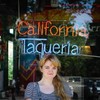For better or worse, movies about teenage girls tend to focus on riding in cars with boys or climbing cliquey social ladders, maybe with some dreamy Sofia Coppola blondes-in-dresses bullshit thrown in there for good measure. Greta Gerwig’s Lady Bird, which will compete for Best Picture at the Oscars this weekend, is a rare exception to those unwritten rules. An ostensibly simple story about that weird last year of high school, Lady Bird feels like the first teen movie to properly understand that when you’re a 17-year-old girl it’s not the cute emo boy from math class who breaks your heart—it’s your best friend, or your mother, or, more likely, both. But as a generation of Australians would know, Lady Bird has a forerunner: Looking for Alibrandi.
Advertisement
Kate Woods' 2000 adaptation of Melina Marchetta’s acclaimed young adult novel lives a year in the life of Josie Alibrandi who, like Lady Bird, is an independently-minded Catholic schoolgirl trying to figure out her present and future. Both movies make the case for a down-to-earth portrayal of teenage girls—some cinematic representation for the ones who aren’t necessarily succeeding at losing their virginities or trying out for the cheer squad, but are spending a lot of time applying for university and figuring out what movies and music they like. Mention Looking For Alibrandi to an Australian woman in her twenties or thirties and you’ll probably be drawn into a long and passionate conversation. It’s one of the few great coming-of-age films this country has.Like Lady Bird, Looking For Alibrandi takes a casual look at the class dynamics of a Catholic high school. Josie is a scholarship student at a prestigious all-girls institution filled with nuns and rich white kids who she has trouble relating to as the daughter of working class Italian immigrants. She is also something of a rebel, in one case hitting another student—who completely deserved it, by the way—in the face with a textbook and nearly getting expelled. The plot tackles heavy themes like racism and suicide, but mostly it’s a joyful and realistic celebration of being 17 years old in Sydney: listening to Killing Heidi and thinking deep thoughts, cruising around in P-plated cars with your friends, and deciding what you’re going to be when you grow up.
What’s most unique about Alibrandi and Lady Bird though is the way they touch on a particular aspect of being a teenage girl that no one ever really talks about: the hectic process of choosing your female role models. Your best friend and your mother are two opposing forces in this, and it makes life difficult. The gut-wrenching lyrics of all those songs about love and loss that you’re listening to on your headphones? They’re actually resonating in light of a fight you had with your BFF, who has started spending more and more time with the cool group and leaving you out in the cold. All those hours you’re spending locked away in your bedroom updating your blog? Mostly to avoid confrontation with the woman who raised you but who still just doesn’t get you. It’s fascinating and wonderful and rare to see this phenomenon played out on the big screen in a meaningful way. The only other example that comes to mind is Catherine Hardwicke’s Thirteen, 2003’s incredible and disturbing worst-case-scenario depiction of destructive best friendship.
Advertisement
Maybe it’s better to spell it out: teen movies are way better when they aren’t love stories. The heroine of Lady Bird flits between two well-worn high school crush archetypes: the Penguin Classics-reading fuckboy and the closeted theatre kid. But it’s the quietly tension-filled relationships between women that drive the plot forward, with fittingly heartfelt performances from Saoirse Ronan, Laurie Metcalf, and Beanie Feldstein. Looking For Alibrandi is the same—with age you realise that Josie’s relationships with her mother and grandmother are the most compelling aspects of the movie. So de-emphasised is the teen romance plotline that in Marchetta’s novel (which true fans recognise as being even better than the movie) Josie and her love interest actually break up, but everything still turns out fine. Which feels much more true to the high school romance experience.The last movie about a teenage girl to receive an Academy Award nomination for Best Picture was Juno, in 2007. That movie charmed in similar ways to Lady Bird, with rapid-fire dialogue and time-capsule cultural references, and a non-cheerleader heroine who made a point of being the school weirdo. But it was mainly about teen pregnancy and, unfortunately, the supposed attractiveness of Jason Bateman and Michael Cera. Same thing with Edge of Seventeen, or Diary of a Teenage Girl, or any other recent movie attempting to capture the universal and yet for some reason cinematically elusive experience of Not-Yet-A-Womanhood: a lot of emphasis on the dudes, and not much on the daily realities of being a girl in high school, which are grounded in friendships and family.A male writer or director would be clueless to these concerns, which is why the critical and commercial success of Greta Gerwig’s directorial debut feels important and real. Kate Woods was onto something back in 2000, and within the extensive teen movie canon Lady Bird and Looking For Alibrandi stand apart. Here’s hoping they won’t for long.Follow Kat on Twitter
